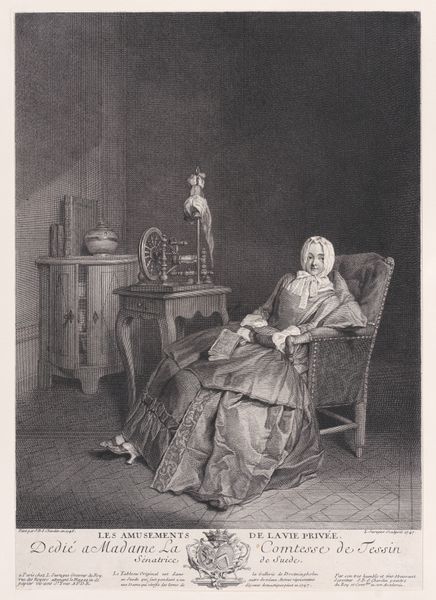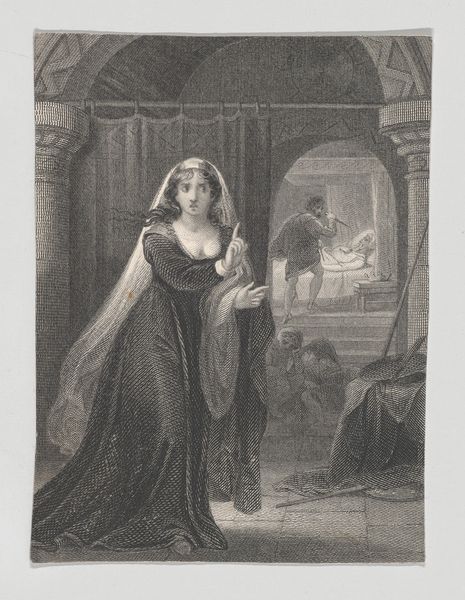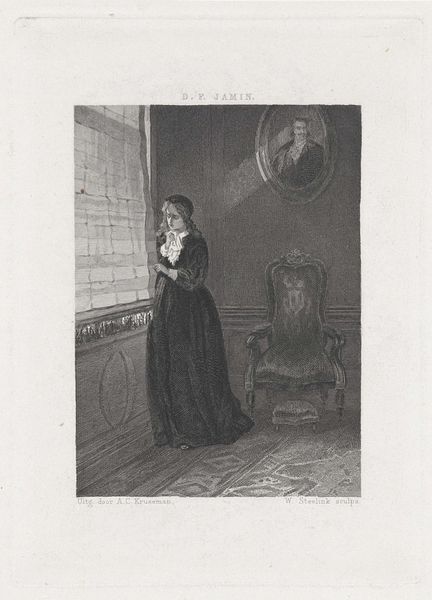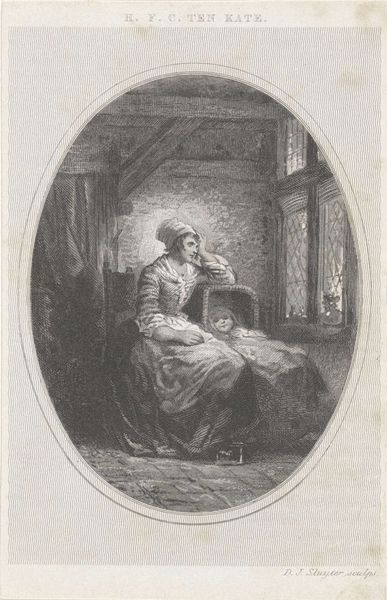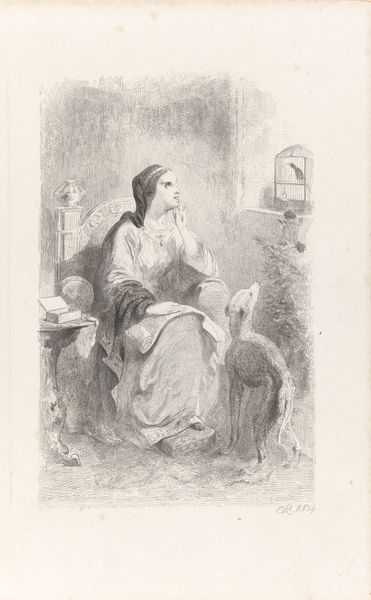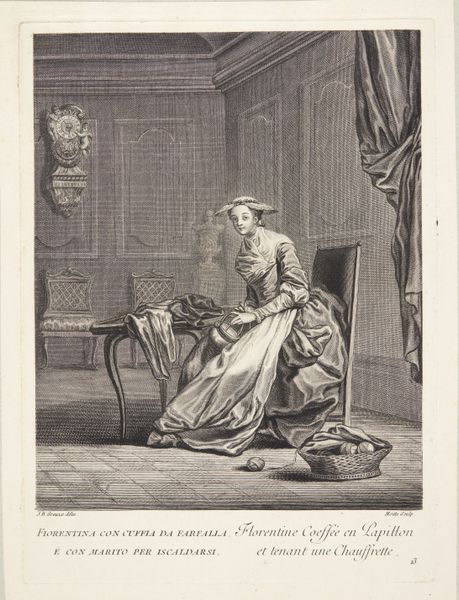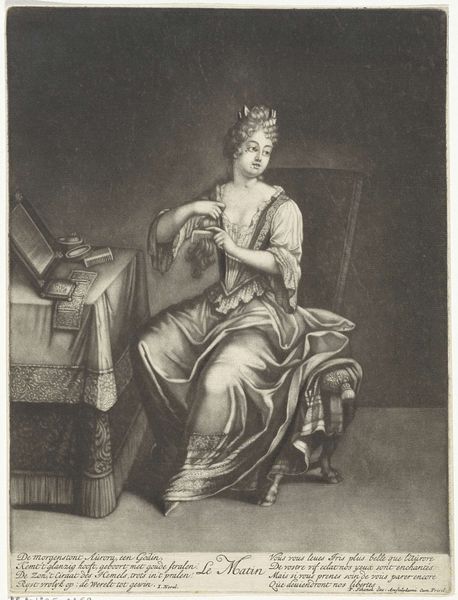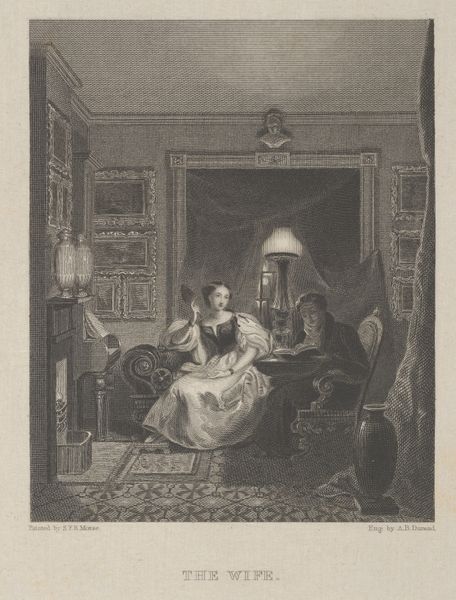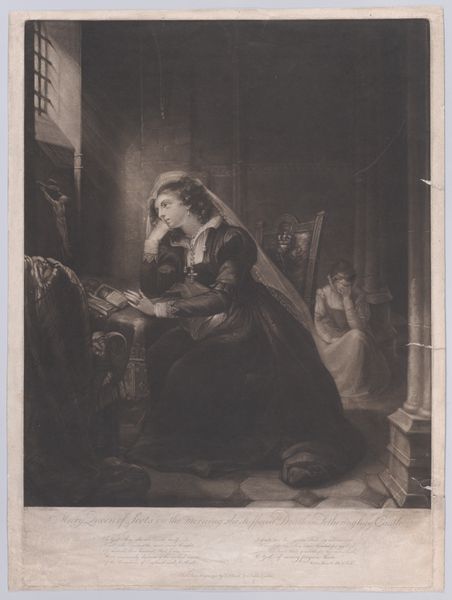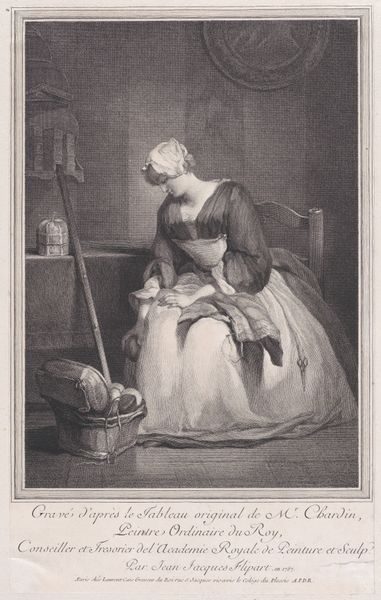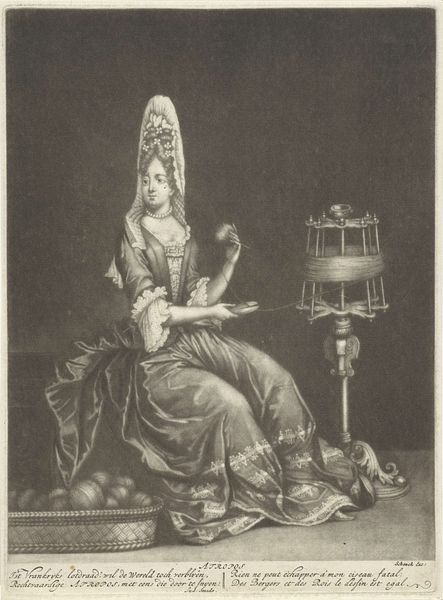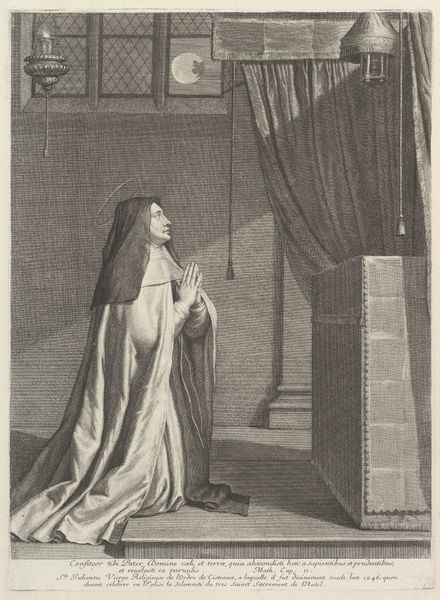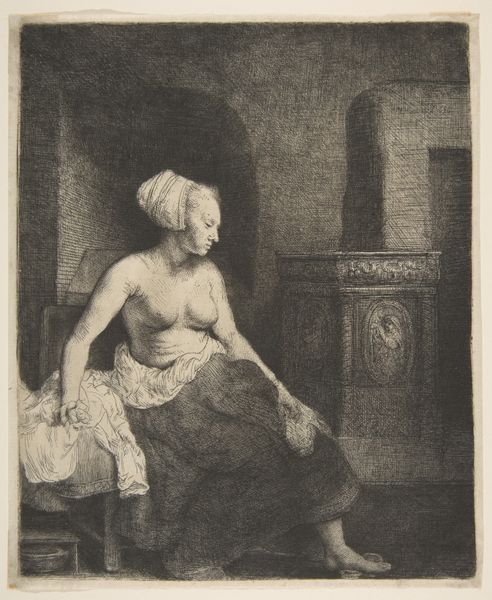
drawing, print, engraving
#
portrait
#
drawing
#
narrative-art
# print
#
sculpture
#
charcoal drawing
#
figuration
#
romanticism
#
line
#
genre-painting
#
history-painting
#
engraving
Copyright: Public domain
Curator: This print, entitled "The Ghost Story," is the work of Robert William Buss, an English artist of the 19th century. Executed in engraving, it invites us into an intimate, domestic scene. What strikes you first about it? Editor: The palpable unease, definitely. The shadows feel so heavy, clinging to every corner of the room. The lone figure, a young woman, seems caught between worlds, her expression a mixture of fright and morbid fascination. Curator: Right, let's consider that spatial dynamic, it’s more complex than first appears. The engraving technique lends itself particularly well to capturing gradations in light and shadow. You see the meticulous layering of lines building up the textures of the fabric of her dress and chair but it also creates these ominous voids behind her. It’s about how these processes reflect the growing middle-class market for illustrated narratives. Editor: I agree. The clothing signifies that market and economic dynamic. But it’s not just the dress but the book itself, and even the very fact she is alone in a private interior at night which feels very relevant. These details heighten the tension. And that flickering candle, reflected in the mirror—mirrors always hint at hidden dimensions, other realms. She’s almost daring something to appear. Curator: She becomes a consumer of that other realm too; the objects around her show evidence of trade and domestic labour as well. Do you see the small statuette on the floor, tossed aside near her foot? Those production techniques mirror that in book making through mechanised image reproduction for larger, paying markets. The cultural and material production are entwined. Editor: Precisely! She's reading a narrative that has, through oral and then material culture, always been charged with symbols: the moon as lunacy, darkness, repressed desire. I think Buss taps into the way that narratives of the supernatural were interpreted – especially at this time – to explain anxieties about changes to society and place. Curator: Interesting. Considering those links, it reveals how social and material change creates an avenue for art, a market through illustration to assuage cultural anxiety with new commodity processes. Editor: Agreed, a ghostly presence haunting social structures in a beautifully wrought engraving! Curator: And a chilling illustration of how cultural narratives take form, become material, and are themselves haunted by histories.
Comments
No comments
Be the first to comment and join the conversation on the ultimate creative platform.
